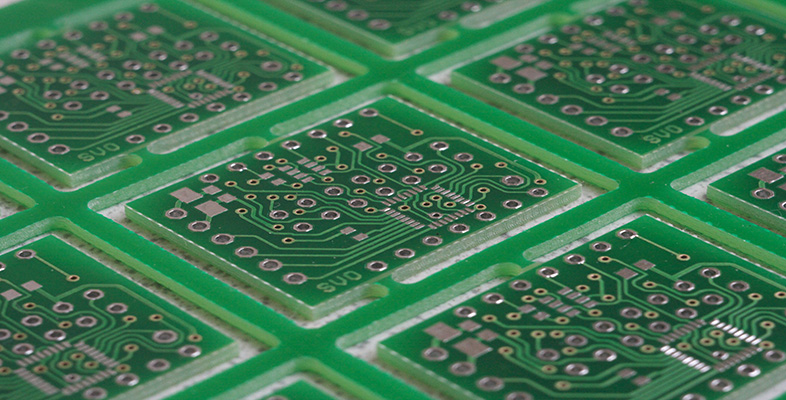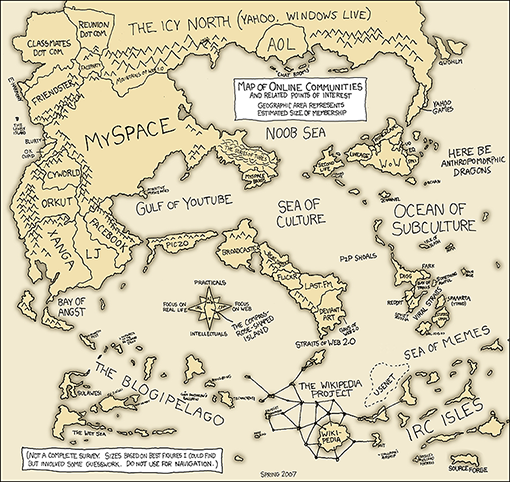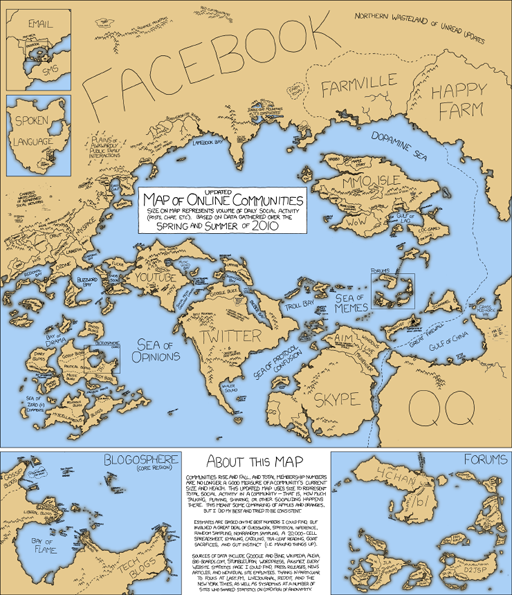2.2 Communities
[Break point. This would be a good point to take a break if you need to do something else before returning later.] As well as revolutionising the commercial world, the internet has had an enormous impact on the way we communicate. While there are still people in many parts of the world who do not have internet access, many of us have access at home or at work. As a result we have the opportunity to communicate with others using email, instant messaging and online discussion groups (in online forums). Existing communities have created new ways of communicating, and new online communities have developed. Social networking plays an increasingly significant role in the lives of many people.
The recent pace of communication change has amazed many of us, and there is no reason to think things will slow down. The cartoon map of online communities shown in Figure 5 appeared on the Web in early 2007. Since then, the social networking site Facebook has increased in significance and size at the expense of MySpace, and micro-blogging sites such as Twitter – which allows users to post and read short messages – have appeared and grown.
An updated version of this map is given below. It gives a feel for those changes and more.


